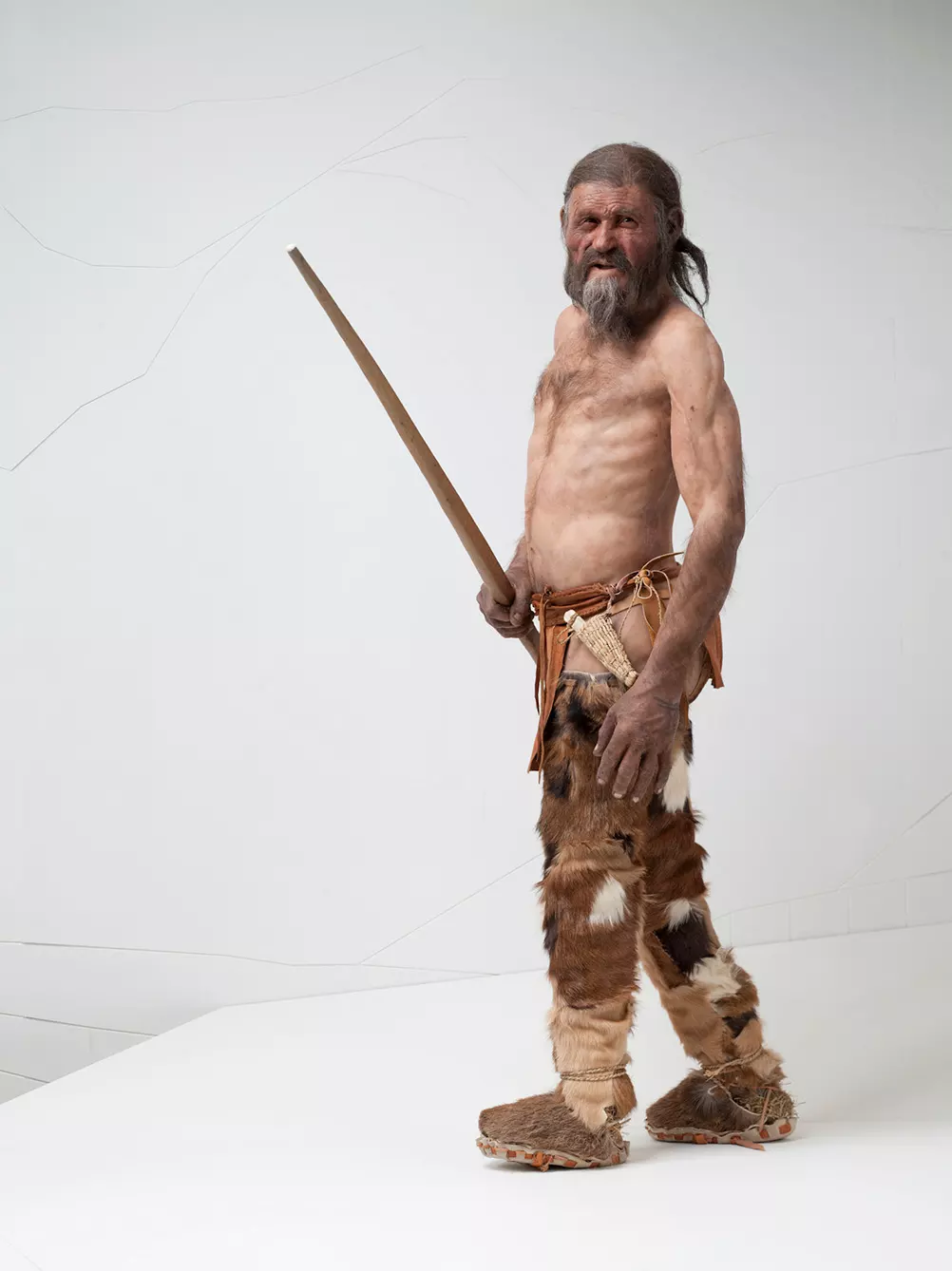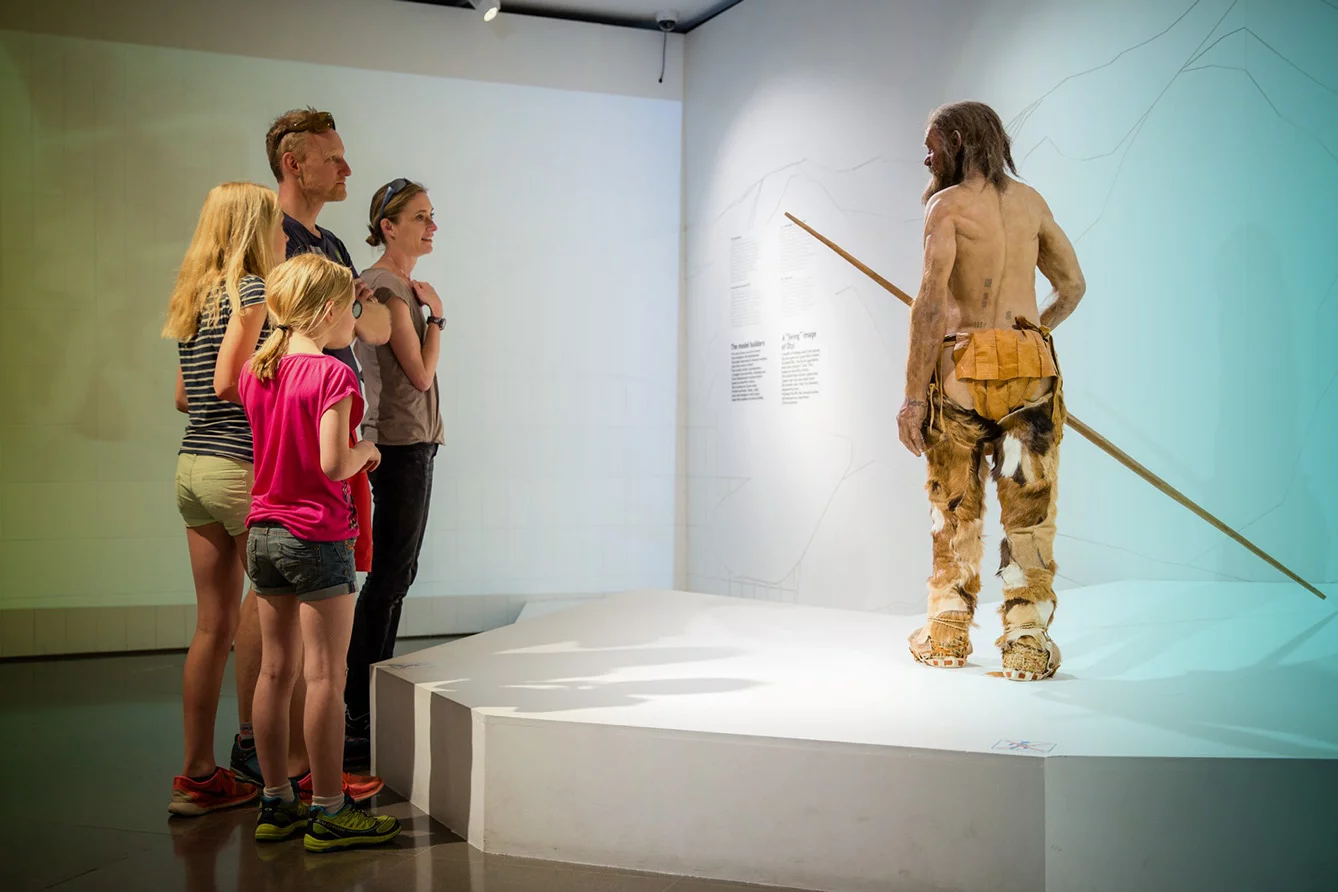On a chilly day in September 1991, a pair of German tourists in the Alps had to call the Austrian police. In the snow on the glacier, as they reported, was a man, perhaps a deceased hiker. There was no hope for his survival, but the body needed to be collected so the man could have a decent burial.
It took three days for teams to excavate the body. Apart from evacuation teams, other groups of people visited the site, including the famous Austrian mountaineer Reinhold Messner and his Italian colleague Hans Kammerlander.
The Ötzi identity
The fact is somehow fitting for this story, as it reflects the sense of the place – when hiking in the mountains, you can rarely actually tell which country you currently are in. And this body was precisely on the border between Italy and Austria.





The body was finally excavated and brought to the Austrian city of Innsbruck for examination. But the longer the excavation lasted, the clearer it became that something wasn’t right in the picture. The body was far from properly dressed for a contemporary mountaineer. His tattoos seemed unfamiliar. And wait, did he have a… copper ax?
The initial examination confirmed that the body was “at least a thousand years old.” However, a more detailed analysis showed that the body was far older than that. It was determined with 99% accuracy that the man had died sometime between 3,300 and 3,100 BC, or some five thousand years ago. The man had no ID or driver’s license, so he was called Ötzi (pronounced OOT-zie) – after the Ötztal Alps mountain range where he was found.
Ötzi: influential 5,000-year-old
Ötzi remains one of the most influential figures in contemporary archeology because of his condition upon finding. He was shot in the back by an arrow and died conveniently on the glacier’s edge, where his body was perfectly mummified and preserved almost untouched.
He was so untouched that even the contents of his stomach could be analyzed (his last meal was cooked grain and goat bacon). That, together with his belongings – also in great shape – has given immense insight into the life of the iceman. Further examination, including modern radiologic techniques, determined that he was around 45 years old and possibly a copper smelter by trade.
His value to modern science is impossible to overemphasize, so it’s little wonder that his “nationality” became an issue. When German tourists came upon Ötzi, they called Austrian authorities, and the place of the initial examination was Innsbruck. But this was complicated.
Flowing boders
In 1919, when the border between North and South Tyrol was drawn, granting part to Austria and the other to Italy, the divide was the drainage area between Inn and Etch rivers. But the delineation of this discovery was complicated as Ötzi was found on a glacier that later retracted. It was ultimately determined that the border had been drawn too far to the north.
Therefore, though technically the valley with Ötzi’s burial site belongs to Austria, it was later decided that Ötzi was found on Italian territory. Scientists and authorities of both nations agreed that Innsbruck would finish its research on Ötzi and pass him to the Italian city of Bolzano. And this is exactly where he has resided since 1998 at the South Tyrol Museum of Archaeology. Don’t forget, though, that he’s a man on the border.







